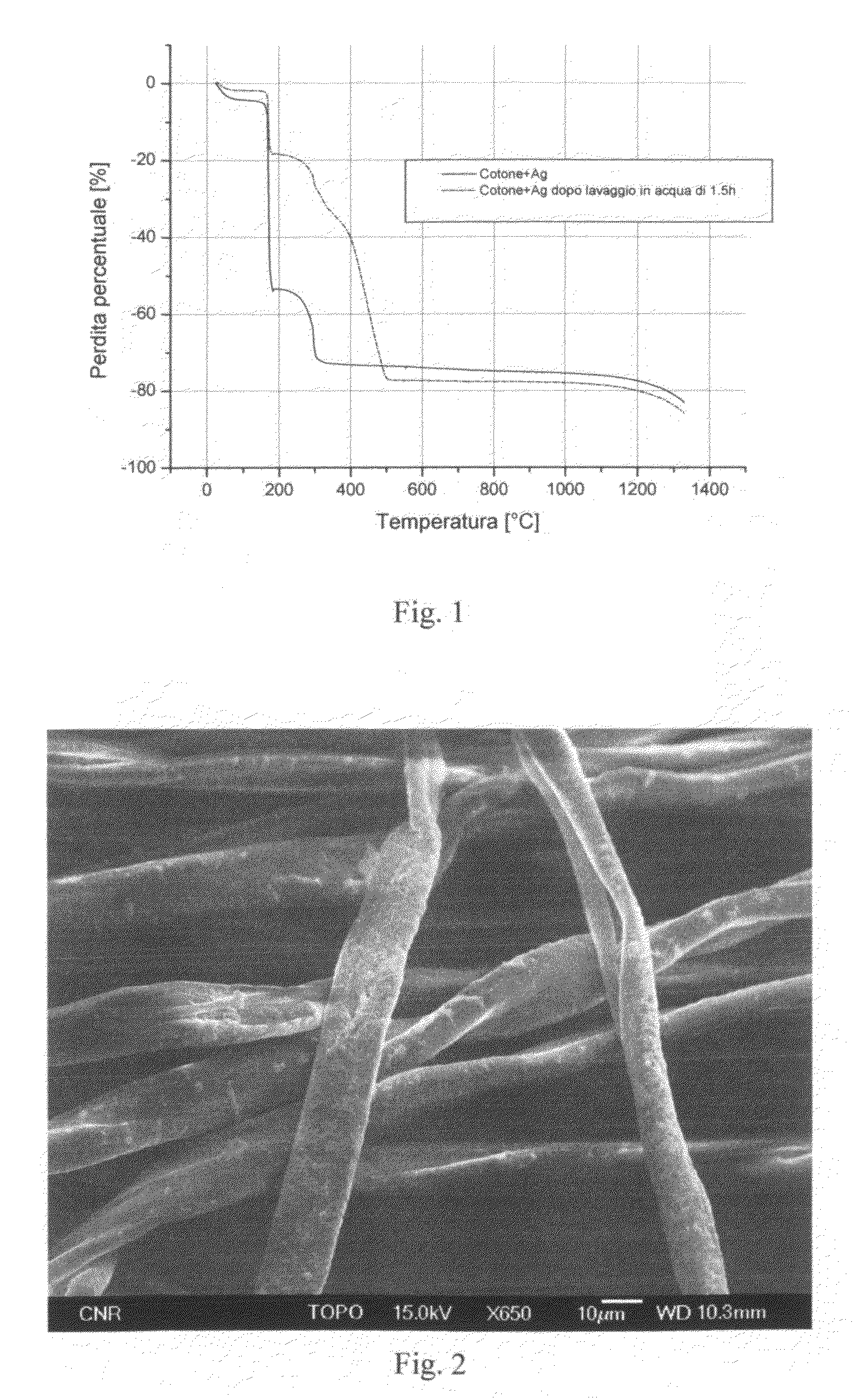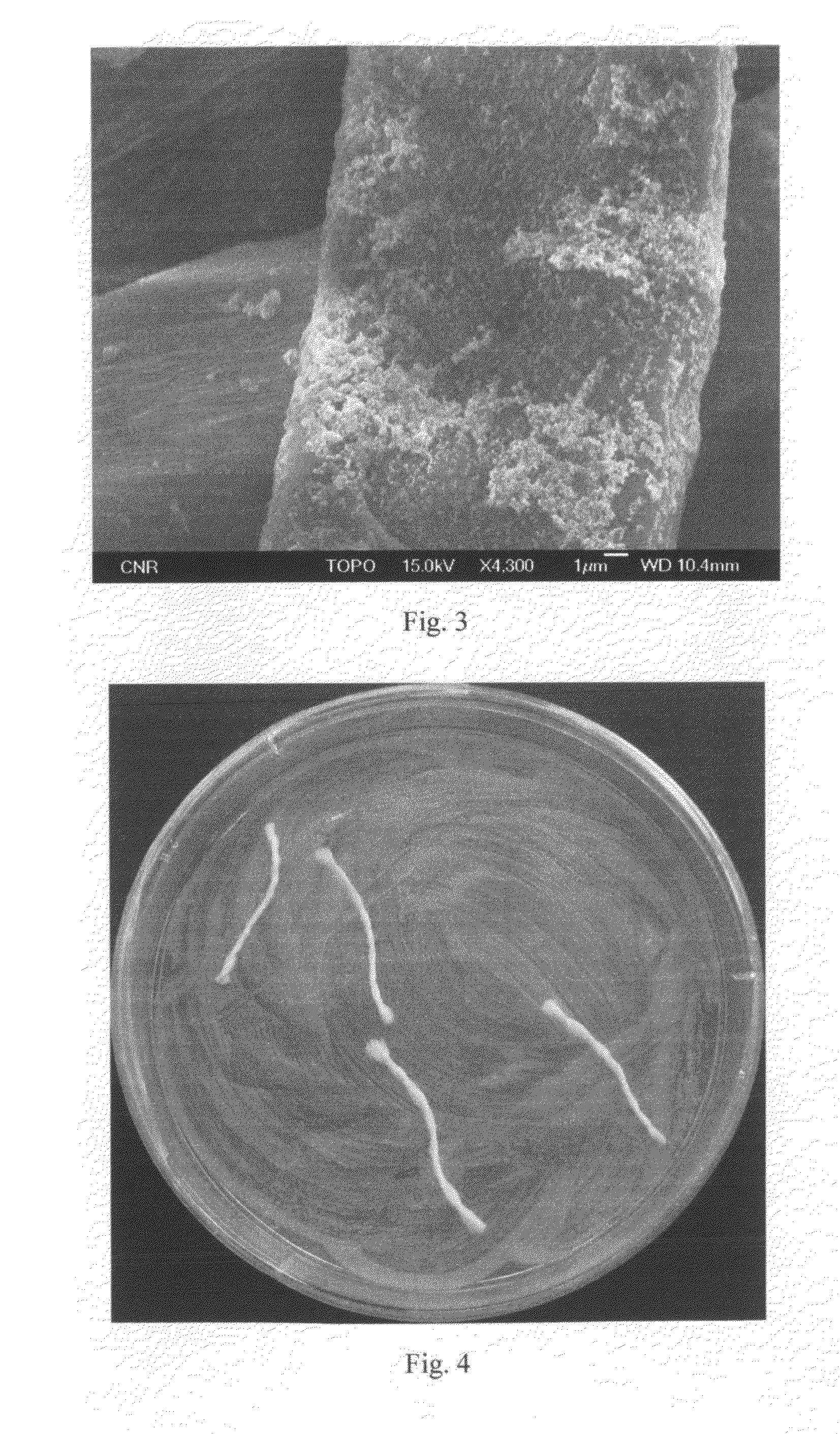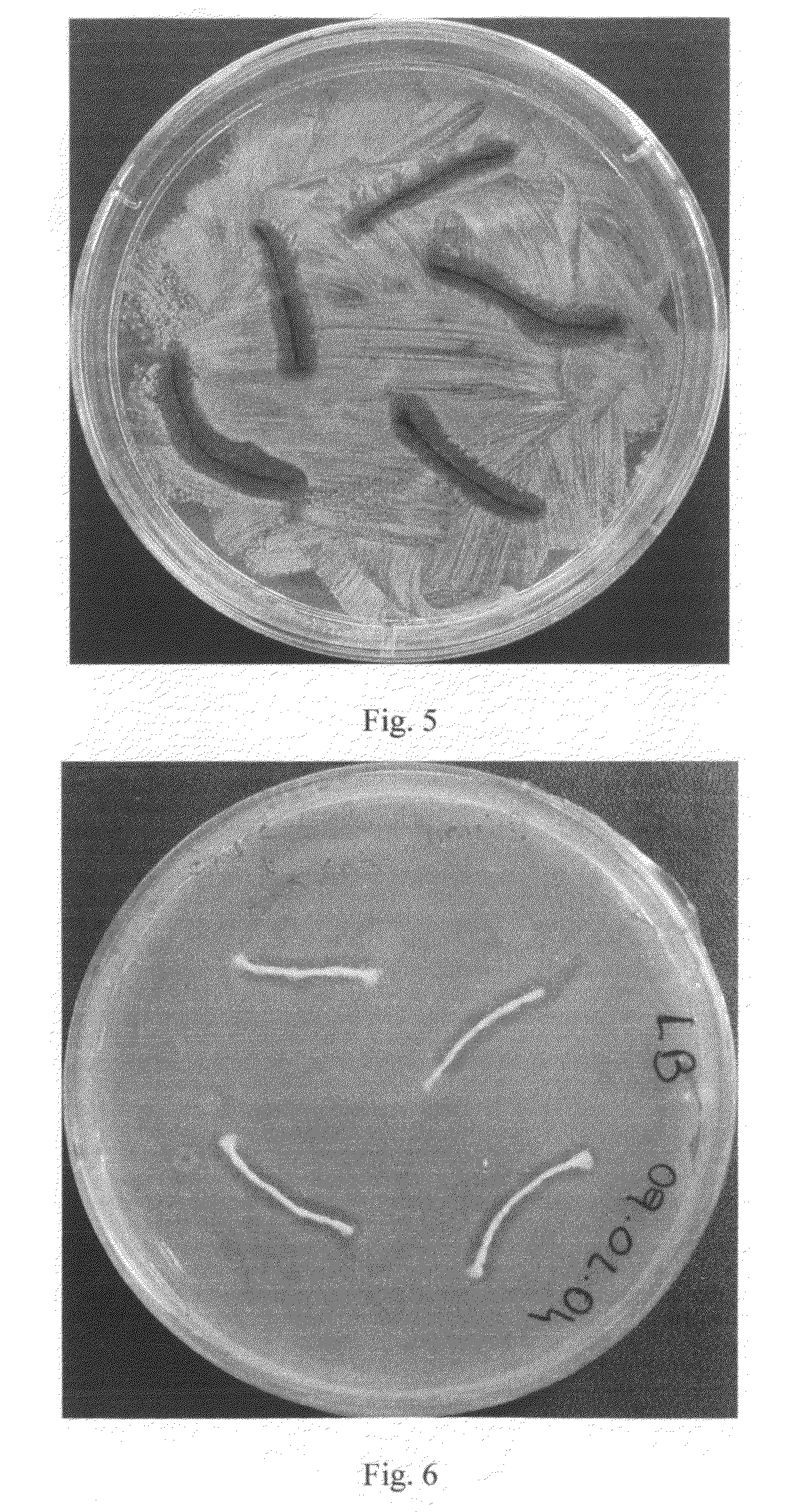Antibacterial Surface Treatments Based on Silver Cluster Deposition
a surface treatment and antibacterial technology, applied in the field of antibacterial surface treatment based on silver cluster deposition, can solve the problems of inability to use, inability to contact food, and ineffective zinc, and achieve the effects of high antibacterial activity, improved antibacterial effect, and improved antibacterial
- Summary
- Abstract
- Description
- Claims
- Application Information
AI Technical Summary
Benefits of technology
Problems solved by technology
Method used
Image
Examples
example 1
[0029]An example of carrying out the process is the described below.
[0030]a) Solution Preparation
[0031]For 100 g solution with 5%wt of silver nitrate, you would need 95.24 g methanol and 4.76 g AgNO3.
[0032]Dilute the silver salt in the methanol, by dipping the beaker in an ultrasounds bath for five minutes.
[0033]b) Impregnation
[0034]Shortly dip the fibers inside the beaker containing the solution; then expose them to the UV rays for approximately two minutes; the silver clusters will appear together with a color change in the fibers, which, if white, will become dark brown.
example 2
[0035]Another example of carrying out the process is described below.
[0036]c) Solution Preparation
[0037]For 100 g aqueous solution with 5%wt of silver nitrate, you would need 10 g methanol and 5 g AgNO3 and 85 g H2O.
[0038]Dilute the silver salt in the methanol, than add water.
[0039]d) Impregnation
[0040]Shortly dip the fibers inside the beaker, containing the solution; then expose them to the UV rays for approximately two minutes; a color change in the fibers, will indicate that silver ions reduction to form silver clusters has occurred.
PUM
 Login to View More
Login to View More Abstract
Description
Claims
Application Information
 Login to View More
Login to View More - R&D
- Intellectual Property
- Life Sciences
- Materials
- Tech Scout
- Unparalleled Data Quality
- Higher Quality Content
- 60% Fewer Hallucinations
Browse by: Latest US Patents, China's latest patents, Technical Efficacy Thesaurus, Application Domain, Technology Topic, Popular Technical Reports.
© 2025 PatSnap. All rights reserved.Legal|Privacy policy|Modern Slavery Act Transparency Statement|Sitemap|About US| Contact US: help@patsnap.com



